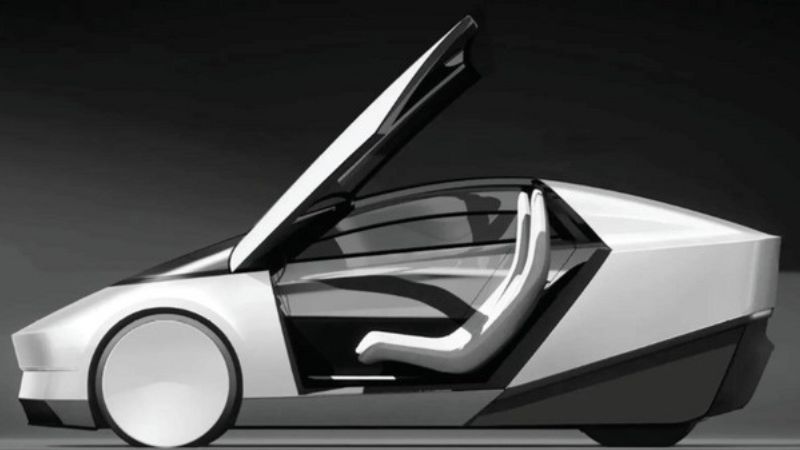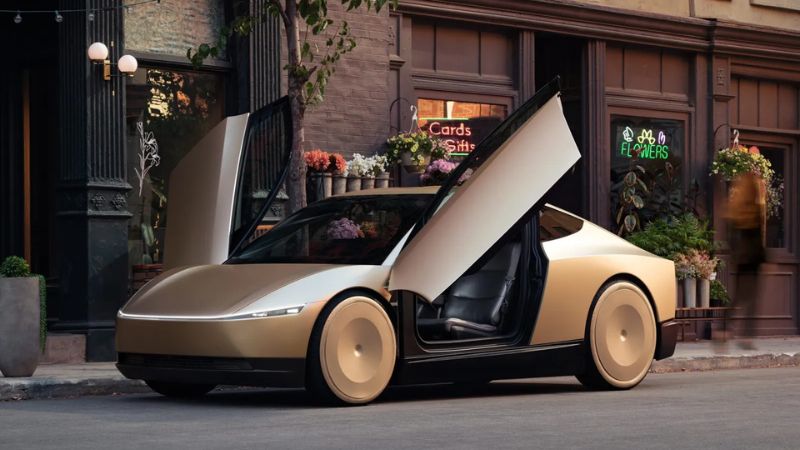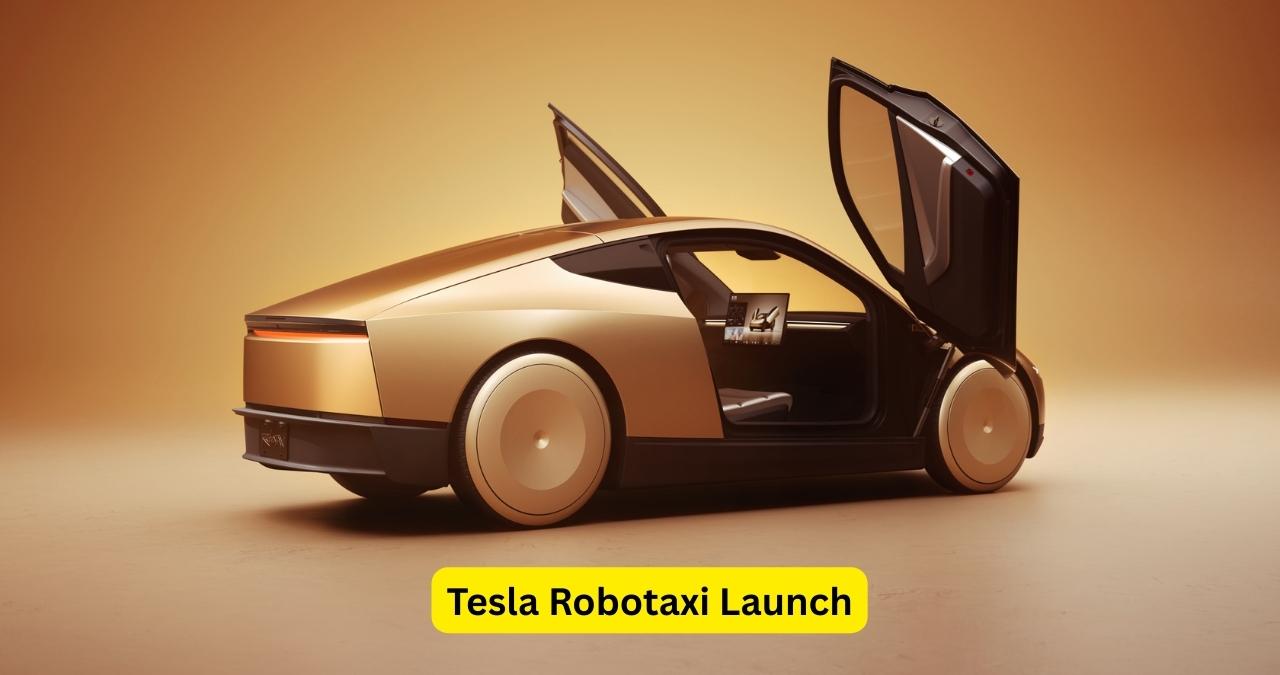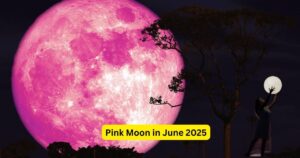Picture this: you’re in Austin, Texas, tapping your phone to summon a sleek Tesla that drives itself to pick you up—no driver, no hassle. That’s the bold vision behind Tesla’s robotaxi launch, set for June 2025. But a surprising twist has sparked debate: Piper Sandler, a firm that’s usually bullish on Tesla, predicts this ambitious project might be “destined for failure.” Why the skepticism? And could Tesla still pull it off? In this blog, we’ll unpack the controversy, explore the challenges and opportunities, and share tips to stay in the loop. Let’s dive in!
Table of Contents
ToggleWhat is the Tesla Robotaxi?
The Tesla robotaxi launch is Tesla’s plan to roll out a driverless ride-hailing service, starting with a pilot in Austin, Texas, in June 2025. Unlike the futuristic Cybercab—a steering-wheel-less vehicle unveiled in 2024—the initial service will use existing models like the Model Y, powered by Tesla’s Full Self-Driving (FSD) version 13 software. The goal? A fully autonomous taxi that navigates city streets without human intervention, bookable via a Tesla app.
Elon Musk, Tesla’s CEO, sees robotaxis as a game-changer. He’s pitched a future where Tesla owners can add their cars to the robotaxi network, earning money when their vehicles aren’t in use. Musk claims this could make Tesla a “$5 trillion company,” according to an X post. But not everyone shares his confidence.
Key Takeaway: The Tesla robotaxi launch aims to revolutionize transportation, but its reliance on FSD technology and existing vehicles raises questions about readiness.
Piper Sandler’s Warning: Why the Launch Might Struggle
Piper Sandler, a respected investment firm, is generally optimistic about Tesla, maintaining an “Overweight” rating and a $400 stock price target, as noted by Investing.com. Yet, their analyst Alexander Potter has sounded an alarm about the Tesla robotaxi launch. In a May 2025 note, Potter stated that FSD version 13 “cannot support truly autonomous vehicles without human control,” a critical flaw for a driverless service, according to TheStreet.
Here’s why Piper Sandler is skeptical:
FSD Limitations: After consulting Elias Martinez, creator of the FSD Community Tracker, Piper Sandler concluded that FSD version 13 isn’t ready for full autonomy, requiring human oversight that undermines the robotaxi model.
Small Pilot Scale: The Austin pilot will start with just 10–20 vehicles, which may not prove the service’s scalability, as highlighted by Reuters.
Regulatory Roadblocks: Tesla faces hurdles in securing approvals, especially in California, where it holds only a preliminary permit, per Reuters.
Tesla’s Track Record: Musk’s 2019 promise of 1 million robotaxis by 2020 never materialized, fueling doubts about meeting the 2025 deadline.
Key Takeaway: Piper Sandler’s concerns about FSD’s readiness and logistical challenges cast doubt on the Tesla robotaxi launch, despite their overall optimism.
The Optimistic Side: Why Tesla Might Succeed
Not everyone agrees with Piper Sandler’s grim outlook. Some analysts and investors see the Tesla robotaxi launch as a potential catalyst for growth. Wolfe Research, for instance, called it the “key driver” for Tesla’s stock in 2025, per Investing.com. Tesla’s stock jumped 15% after its Q1 2025 earnings call, where Musk promised robotaxis would “move the financial needle” by late 2026, according to Reuters.
Musk’s confidence is echoed by Tesla enthusiasts. Chris Lee, a Tesla owner and YouTuber, told CNBC that while FSD “has a ways to go,” its progress is “insane” compared to three years ago. Recent app updates, like those shared in an X post, show Tesla adding robotaxi features, signaling progress toward the June launch.
Key Takeaway: Optimists believe Tesla’s rapid FSD improvements and Musk’s vision could make the Tesla robotaxi launch a success, boosting its stock and reputation.
Opportunities for Tesla

Despite the challenges, the Tesla robotaxi launch offers significant opportunities:
Market Leadership: Success could position Tesla ahead of competitors like Waymo and Cruise in the autonomous vehicle market.
New Revenue Streams: Ride-hailing fees and FSD subscriptions could diversify Tesla’s income, as Musk suggested in an X post.
Stock Growth: A successful pilot could validate Tesla’s high valuation, attracting more investors, per Wolfe Research.
Technological Advancements: Data from the pilot could accelerate FSD improvements, strengthening Tesla’s AI capabilities.
Key Takeaway: The Tesla robotaxi launch could transform Tesla’s business model, but only if it overcomes technical and regulatory hurdles.
Impact on Tesla’s Stock and Future
The Tesla robotaxi launch is a high-stakes moment for Tesla’s stock and long-term strategy. Here’s how it could play out:
Success Scenario: A smooth pilot could boost Tesla’s stock by proving its autonomous driving prowess, as Wolfe Research predicts. It could also shift Tesla’s identity from automaker to AI leader, opening new markets.
Failure Scenario: If the launch falters, investor confidence may wane, especially after a 36% stock drop in Q1 2025, per CNBC. This could force Tesla to refocus on its core EV business.
Example: After the 2024 Cybercab reveal, Tesla’s stock fell 9% when investors found the event lacking details, per NBC Los Angeles. A similar reaction could follow a failed launch.
5 Tips to Stay Informed on the Tesla Robotaxi Launch

Want to keep up with the Tesla robotaxi launch? Here are five actionable tips:
Follow Tesla’s Updates: Check Tesla’s Investor Relations page and earnings calls for official announcements on FSD and robotaxi progress.
Read Credible News: Sites like Electrek and Reuters offer detailed coverage.
Watch FSD Videos: YouTube channels like EverydayChris provide real-world FSD tests, giving insights into its capabilities.
Join X Discussions: Engage with posts like those from @SawyerMerritt to see what enthusiasts are saying.
Track Regulatory News: Monitor updates on autonomous vehicle laws in Texas and California for clues about Tesla’s progress.
Example: Following an X post about Tesla’s trademark issues helped fans understand branding challenges, keeping them informed.
Conclusion: A High-Stakes Moment for Tesla
The Tesla robotaxi launch is a bold bet on the future of transportation, but it’s not without risks. Piper Sandler’s warning about FSD version 13’s limitations, coupled with regulatory and scalability challenges, suggests the road ahead is bumpy. Yet, Tesla’s history of defying skeptics, Musk’s unwavering vision, and growing investor enthusiasm keep hope alive. As June 2025 nears, the Tesla robotaxi launch will test whether Tesla can deliver on its promise or face another setback. Stay tuned, follow the tips above, and let us know your thoughts: Will Tesla’s robotaxi soar or stumble?
FAQs: Your Questions Answered -
- What is the Tesla robotaxi launch?
The Tesla robotaxi launch is a driverless ride-hailing service starting in Austin, Texas, in June 2025, using Tesla vehicles with FSD version 13. Learn more at Tesla’s Investor Relations.
- When is Tesla launching its robotaxi service?
Tesla plans to launch its robotaxi service in June 2025 in Austin, Texas, per Reuters.
- Why does Piper Sandler think the Tesla robotaxi launch might fail?
Piper Sandler believes FSD version 13 isn’t ready for full autonomy, citing its need for human oversight, per TheStreet.
- Is Tesla’s FSD technology ready for robotaxis?
FSD version 13 isn’t fully autonomous yet, requiring human intervention, but Tesla is working on improvements, per Investing.com.
- How will the Tesla robotaxi launch affect Tesla’s stock?
Success could drive stock growth, while failure might increase skepticism, per CNBC.
- Can I add my Tesla to the robotaxi network?
Musk has suggested owners may add their cars to the network post-launch, earning income, as discussed in an X post.
- What is the status of Tesla’s robotaxi trademark?
The U.S. Patent Office rejected Tesla’s “Robotaxi” trademark for vehicles, but the ride-hailing application is under review, per Reuters.








